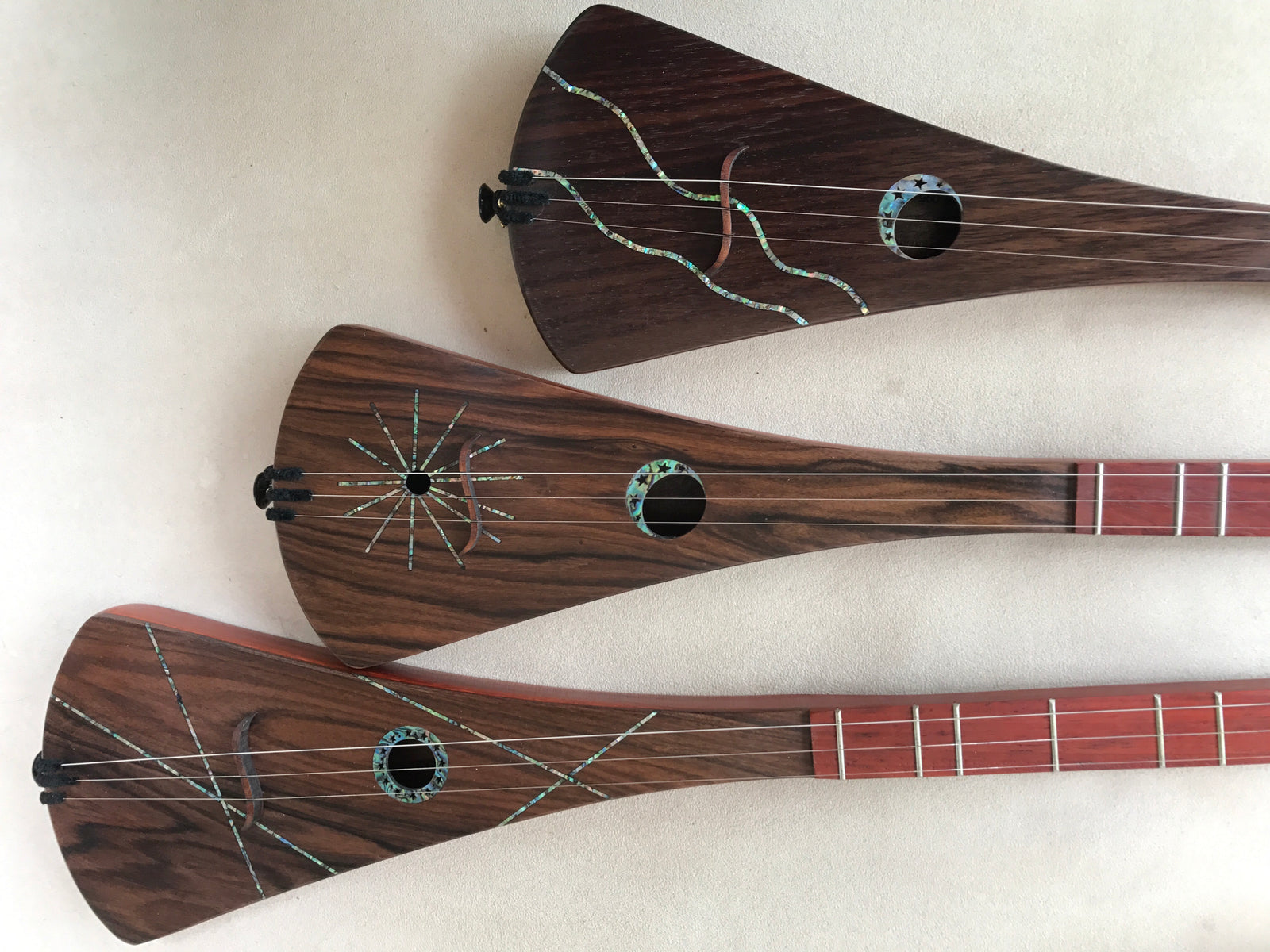Best Seller Strumstick
Products
To Use the D'Adarrio Capo:
Position arm over strings (just behind fret, even touching the fret a little is OK) and tighten thumbscrew; firmly but don't overdo it.

Strumstick Keys with Capo:
A capo is a device (familiar to guitar players) which clamps all the strings at a particular fret, changing their pitch. With guitar, the capo simply changes the key. With the Strumstick, the capo changes the key, but also changes the type of musical scale you get.
G Strumsticks
Without Capo, key of G Major
Capo at 1st fret gives key of A minor
Capo at 2nd fret gives a Bluesy scale in B
Capo 3rd fret gives C Major
Capo 4th fret gives D minor or D Major
D Strumsticks
Without Capo, key of D Major
Capo at 1st fret gives key of E minor
Capo at 2nd fret gives a Bluesy scale in F#
Capo 3rd fret gives G Major.
Capo 4th fret gives A minor or A Major
Why does the capo change the scale as well as the pitch? The Strumstick frets are designed to give a diatonic (major) scale. The scale is a pattern of whole steps and half steps. If you capo at the first fret, you raise all the strings (by a whole tone) but you also change the pattern of frets to a different scale. Each fret you place the capo at gives a different type of scale.
Tuning the Strumstick higher or lower will give even more keys.
Keep in mind that the extra fret (fret number 6, the flatted seventh) may please or annoy you, depending on which fret you are capoed at. If that fret does not sound good, skip it when playing.
Sales, New Products, Instructions, Videos, and Free Offers, Useful Content.
